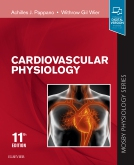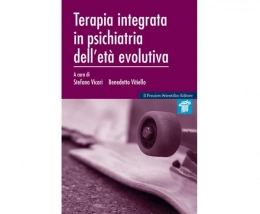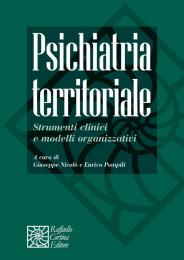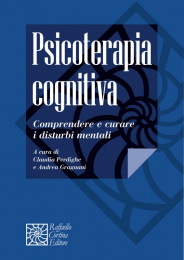Non ci sono recensioni
DA SCONTARE
Gain a foundational understanding of cardiovascular physiology and how the cardiovascular system functions in health and disease. Cardiovascular Physiology, a volume in the Mosby Physiology Series, explains the fundamentals of this complex subject in a clear and concise manner, while helping you bridge the gap between normal function and disease with pathophysiology content throughout the book.
Table Of Contents:
Chapter 1 OVERVIEW OF THE CIRCULATION AND BLOOD
The Circulatory System
Blood
Erythrocytes
Leukocytes
Lymphocytes
Platelets
Blood Is Divided into Groups by Antigens Located on Erythrocytes
Summary
Case 1-1
Chapter 2 EXCITATION: THE CARDIAC ACTION POTENTIAL
Cardiac Action Potentials Consist of Several Phases
The Principal Types of Cardiac Action Potentials Are the Slow and Fast Types
Ionic Basis of the Resting Potential
The Fast Response Depends Mainly on Voltage-Dependent Sodium Channels
Ionic Basis of the Slow Response
Conduction in Cardiac Fibers Depends on Local Circuit Currents
Conduction of the Fast Response
Conduction of the Slow Response
Cardiac Excitability Depends on the Activation and Inactivation of Specific Currents
Fast Response
Slow Response
Effects of Cycle Length
Summary
Case 2-1
Chapter 3 AUTOMATICITY: NATURAL EXCITATION OF THE HEART
The Heart Generates Its Own Pacemaking Activity
Sinoatrial Node
Ionic Basis of Automaticity
Overdrive Suppression
Atrial Conduction
Atrioventricular Conduction
Ventricular Conduction
An Impulse Can Travel Around a Reentry Loop
Afterdepolarizations Lead to Triggered Activity
Early Afterdepolarizations
Delayed Afterdepolarizations
Electrocardiography Displays the Spread of Cardiac Excitation
Scalar Electrocardiography
Dysrhythmias Occur Frequently and Constitute Important Clinical Problems
Altered Sinoatrial Rhythms
Atrioventricular Transmission Blocks
Premature Depolarizations
Ectopic Tachycardias
Fibrillation
Summary
Case 3-1
Chapter 4 THE CARDIAC PUMP
The Microscopic and Gross Structures of the Heart
Cardiac Muscle (myocardial) Cell Morphology
Structure of the Heart: Atria, Ventricles, and Valves
The Force of Cardiac Contraction Is Determined by Excitation-Contraction Coupling and the Initial Sarcomere Length of the Myocardial Cells
Excitation-Contraction Coupling Is Mediated by Calcium
Mechanics of Cardiac Muscle
The Sequential Contraction and Relaxation of the Atria and Ventricles Constitute the Cardiac Cycle
Ventricular Systole
Echocardiography Reveals Movement of the Ventricular Walls and of the Valves
The Two Major Heart Sounds Are Produced Mainly by Closure of the Cardiac Valves
The Pressure-Volume Relationships in the Intact Heart
Passive or Diastolic Pressure-Volume Relationship
Active or End-Systolic Pressure-Volume Relationship
Pressure and Volume during the Cardiac Cycle: The P-V Loop
Preload and Afterload during the Cardiac Cycle
Contractility
The Fick Principle Is Used to Determine Cardiac Output
Metabolism of ATP and its Relation to Mechanical Function
Fatty Acid Metabolism
Carbohydrate Metabolism
Interrelation between Fatty Acid and Carbohydrate Metabolism
Effects of plasma substrate and insulin levels
Cardiac O2 Consumption and the Link between Ventricular Function and Cardiac Metabolism
Summary
Case 4-1
Chapter 5 REGULATION OF THE HEARTBEAT
Heart Rate is Controlled Mainly by the Autonomic Nerves
Parasympathetic Pathways
Sympathetic Pathways
Higher Centers Also Influence Cardiac Performance
Heart Rate Can Be Regulated via the Baroreceptor Reflex
The Bainbridge Reflex and Atrial Receptors Regulate Heart Rate
Respiration Induces a Common Cardiac Dysrhythmia
Activation of the Chemoreceptor Reflex Affects Heart Rate
Ventricular Receptor Reflexes Play a Minor Role in the Regulation of Heart Rate
Myocardial Performance Is Regulated by Intrinsic Mechanisms
The Frank-Starling Mechanism Is an Important Regulator of Myocardial Contraction Force
Changes in Heart Rate Affect Contractile Force
Myocardial Performance Is Regulated by Nervous and Humoral Factors
Nervous Control
Cardiac Performance Is Also Regulated by Hormonal Substances
Summary
Case 5-1
Chapter 6 HEMODYNAMICS
Velocity of the Bloodstream Depends on Blood Flow and Vascular Area
Blood Flow Depends on the Pressure Gradient
Relationship Between Pressure and Flow Depends on the Characteristics of the Conduits
Resistance to Flow
Resistances in Series and in Parallel
Flow May Be Laminar or Turbulent
Shear Stress on the Vessel Wall
Rheologic Properties of Blood
Summary
Case 6-1
Chapter 7 THE ARTERIAL SYSTEM
The Hydraulic Filter Converts Pulsatile Flow to Steady Flow
Arterial Elasticity Compensates for the Intermittent Flow Delivered by the Heart
The Arterial Blood Pressure Is Determined by Physical and Physiological Factors
Mean Arterial Pressure
Cardiac Output
Peripheral Resistance
Pulse Pressure
Stroke Volume
Arterial Compliance
Total Peripheral Resistance and Arterial Diastolic Pressure
The Pressure Curves Change in Arteries at Different Distances from the Heart
Blood Pressure Is Measured by a Sphygmomanometer in Human Patients
Summary
Case 7-1
Chapter 8 The MICROCIRCULATION AND LYMPHATICS
Functional Anatomy
Arterioles Are the Stopcocks of the Circulation
Capillaries Permit the Exchange of Water, Solutes, and Gases
The Law of Laplace Explains How Capillaries Can Withstand High Intravascular Pressures
The Endothelium Plays an Active Role in Regulating the Microcirculation
The Endothelium is at the Center of Flow-Initiated Mechanotransduction
The Endothelium Plays a Passive Role in Transcapillary Exchange
Diffusion Is the Most Important Means of Water and Solute Transfer Across the Endothelium
Diffusion of Lipid-Insoluble Molecules Is Restricted to the Pores
Lipid-Soluble Molecules Pass Directly Through the Lipid Membranes of the Endothelium and the Pores
Capillary Filtration Is Regulated by the Hydrostatic and Osmotic Forces Across the Endothelium
Balance of Hydrostatic and Osmotic Forces
The Capillary Filtration Coefficient Provides a Method to Estimate the Rate of Fluid Movement Across the Endothelium
Hypoxia-inducible factor(s) and angiogenesis
Pinocytosis Enables Large Molecules to Cross the Endothelium
The Lymphatics Return the Fluid and Solutes That Escape Through the Endothelium to the Circulating Blood
Summary
Case 8-1
Case 8-2
Chapter 9 The PERIPHERAL CIRCULATION AND ITS CONTROL
The Functions of the Heart and Large Blood Vessels
Contraction and Relaxation of Arteriolar Vascular Smooth Muscle Regulate Peripheral Blood Flow
Cytoplasmic Ca++ Is Regulated to Control Contraction, via MLCK
Contraction Is Controlled by Excitation-Contraction Coupling and/or Pharmacomechanical Coupling
Control of Vascular Tone by Catecholamines
Control of Vascular Contraction by Other Hormones, Other Neurotransmitters, and Autocoids
Intrinsic Control of Peripheral Blood Flow
Autoregulation and the Myogenic Mechanism Tend to Keep Blood Flow Constant
The Endothelium Actively Regulates Blood Flow
Tissue Metabolic Activity Is the Main Factor in the Local Regulation of Blood Flow
Extrinsic Control of Peripheral Blood Flow Is Mediated Mainly by the Sympathetic Nervous System
Impulses That Arise in the Medulla Descend in the Sympathetic Nerves to Increase Vascular Resistance
Sympathetic Nerves Regulate the Contractile State of the Resistance and Capacitance Vessels
The Parasympathetic Nervous System Innervates Blood Vessels Only in the Cranial and Sacral Regions of the Body
Epinephrine and Norepinephrine Are the Main Humoral Factors That Affect Vascular Resistance
The Vascular Reflexes Are Responsible for Rapid Adjustments of Blood Pressure
The Peripheral Chemoreceptors Are Stimulated by Decreases in Blood Oxygen Tension and pH and by Increases in Carbon Dioxide Tension
The Central Chemoreceptors Are Sensitive to Changes in Paco2
Other Vascular Reflexes
Balance Between Extrinsic and Intrinsic Factors in Regulation of Peripheral Blood Flow
Summary
Case 9-1
Chapter 10 CONTROL OF CARDIAC OUTPUT: COUPLING OF HEART AND BLOOD VESSELS
Factors Controlling Cardiac Output
The Cardiac Function Curve Relates Central Venous Pressure (Preload) to Cardiac Output
Preload or Filling Pressure of the Heart
Cardiac Function Curve
Factors That Change the Cardiac Function Curve
The Vascular Function Curve Relates Central Venous Pressure to Cardiac Output
Mathematical Analysis of the Vascular Function Curve
Venous Pressure Depends on Cardiac Output
Blood Volume
Venomotor Tone
Blood Reservoirs
Peripheral Resistance
Cardiac Output and Venous Return Are Closely Associated
The Heart and Vasculature Are Coupled Functionally
Myocardial Contractility
Blood Volume
Peripheral Resistance
The Right Ventricle Regulates Not Only Pulmonary Blood Flow but Also Central Venous Pressure
Heart Rate Has Ambivalent Effects on Cardiac Output
Ancillary Factors Affect the Venous System and Cardiac Output
Gravity
Muscular Activity and Venous Valves
Respiratory Activity
Artificial Respiration
Summary
Case 10-1
Chapter 11 CORONARY CIRCULATION
Functional Anatomy of the Coronary Vessels
Coronary Blood Flow Is Regulated by Physical, Neural, and Metabolic Factors
Physical Factors
Neural and Neurohumoral Factors
Metabolic Factors
Diminished Coronary Blood Flow Impairs Cardiac Function
Energy Substrate Metabolism During Ischemia
Coronary Collateral Vessels Develop in Response to Impairment of Coronary Blood Flow
Summary
Case 11-1
Chapter 12 SPECIAL CIRCULATIONS
Cutaneous Circulation
Skin Blood Flow Is Regulated Mainly by the Sympathetic Nervous System
Ambient Temperature and Body Temperature Play Important Roles in the Regulation of Skin Blood Flow
Skin Color Depends on the Volume and Flow of Blood in the Skin and on the Amount of O2 Bound to Hemoglobin
Skeletal Muscle Circulation
Regulation of Skeletal Muscle Circulation
Cerebral Circulation
Local Factors Predominate in the Regulation of Cerebral Blood Flow
The Pulmonary and Systemic Circulations Are in Series with Each Other
Functional Anatomy
Pulmonary Hemodynamics
Regulation of the Pulmonary Circulation
The Renal Circulation Affects the Cardiac Output
Anatomy
Renal Hemodynamics
The Renal Circulation Is Regulated by Intrinsic Mechanisms
The Splanchnic Circulation Provides Blood Flow to the Gastrointestinal Tract, Liver, Spleen, and Pancreas
Intestinal Circulation
Hepatic Circulation
Fetal Circulation
Changes in the Circulatory System at Birth
Summary
Case 12-1
Case 12-2
Case 12-3
Chapter 13 INTERPLAY OF CENTRAL AND PERIPHERAL FACTORS THAT CONTROL THE CIRCULATION
Exercise
Mild to Moderate Exercise
Severe Exercise
Postexercise Recovery
Limits of Exercise Performance
Physical Training and Conditioning
Hemorrhage
Hemorrhage Evokes Compensatory and Decompensatory Effects on the Arterial Blood Pressure
The Compensatory Mechanisms Are Neural and Humoral
The Decompensatory Mechanisms Are Mainly Humoral, Cardiac, and Hematologic
The Positive and Negative Feedback Mechanisms Interact
Summary
Case 13-1
Case 13-2
Appendix A: End-of-Chapter CASE STUDY ANSWERS
Appendix B: Comprehensive Examination




